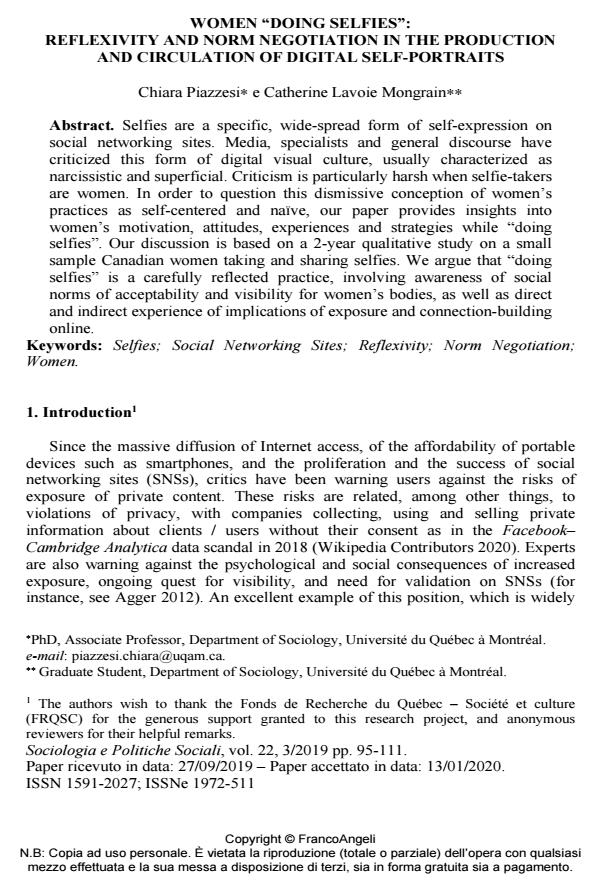Women "doing selfies": reflexivity and norm negotiation in the production and circulation of digital self-portraits
Titolo Rivista SOCIOLOGIA E POLITICHE SOCIALI
Autori/Curatori Chiara Piazzesi , Catherine Lavoie Mongrain
Anno di pubblicazione 2020 Fascicolo 2019/3
Lingua Inglese Numero pagine 17 P. 95-111 Dimensione file 235 KB
DOI 10.3280/SP2019-003005
Il DOI è il codice a barre della proprietà intellettuale: per saperne di più
clicca qui
Qui sotto puoi vedere in anteprima la prima pagina di questo articolo.
Se questo articolo ti interessa, lo puoi acquistare (e scaricare in formato pdf) seguendo le facili indicazioni per acquistare il download credit. Acquista Download Credits per scaricare questo Articolo in formato PDF

FrancoAngeli è membro della Publishers International Linking Association, Inc (PILA)associazione indipendente e non profit per facilitare (attraverso i servizi tecnologici implementati da CrossRef.org) l’accesso degli studiosi ai contenuti digitali nelle pubblicazioni professionali e scientifiche
Selfies are a specific, wide-spread form of self-expression on social networking sites. Media, specialists and general discourse have criticized this form of digital visual culture, usually characterized as narcissistic and superficial. Criticism is particularly harsh when selfie-takers are women. In order to question this dismissive conception of women’s practices as self-centered and naïve, our paper provides insights into women’s motivation, attitudes, experiences and strategies while "doing selfies". Our discussion is based on a 2-year qualitative study on a small sample Canadian women taking and sharing selfies. We argue that "doing selfies" is a carefully reflected practice, involving awareness of social norms of acceptability and visibility for women’s bodies, as well as direct and indirect experience of implications of exposure and connection-building online.
Parole chiave:Selfies; Social Networking Sites; Reflexivity; Norm Negotiation; Women.
- Les épreuves de la beauté et les paradoxes de la capacité de choix des femmes Chiara Piazzesi, Catherine Lavoie Mongrain, in Recherches féministes /2021 pp.47
DOI: 10.7202/1085241ar
Chiara Piazzesi , Catherine Lavoie Mongrain, Women "doing selfies": reflexivity and norm negotiation in the production and circulation of digital self-portraits in "SOCIOLOGIA E POLITICHE SOCIALI" 3/2019, pp 95-111, DOI: 10.3280/SP2019-003005